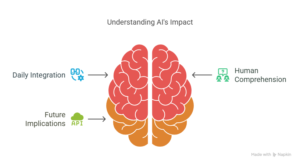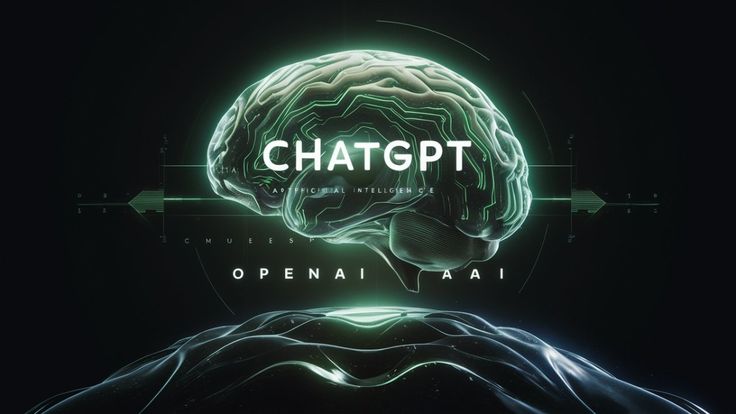Learn what is artificial intelligence in simple words. Explore its uses, types, benefits, and real-world impact through facts, tables, and FAQs.
What is Artificial Intelligence?
AI (Artificial Intelligence) “Artificial Intelligence is the intelligence demonstrated by machines or computers as opposed to the natural intelligence displayed by humans.” What does this mean? It can enable machines to learn from data, to make decisions, to solve problems, in some cases more efficiently than our human brains. For instance, AI is applied in phones, cars, health care as well as video games. So what is artificial intelligence? It’s just a piece of smart technology that can understand, learn and work like a person — only faster, and sometimes better.

In our rapidly moving world today, artificial intelligence is starting to become a large part of what we do every day. The question, “what is artificial intelligence?“, is asked on a daily basis as human beings try to comprehend how it is their lives they are destroying and what it means for the future.
How Does A.I. Work?
AI operates through brute force: lots of data and very powerful programs to help machines learn. Whereas a student studies books, AI learns from huge collections of information. And, knowing all this, it can solve problems, converse with people or even drive a car.
AI includes things like:
- AI – Computers thinking like humans, and Machine Learning, which is more on learning from data.
- Natural Language Processing – the ability to speak and comprehend human languages.
- Computer Vision – identification and perception of objects.
Comparison Table: Human Thinking vs Artificial Intelligence
| Feature | Human Brain | Artificial Intelligence |
|---|---|---|
| Learns by | Experience, emotions, senses | Data and algorithms |
| Speed of learning | Slower | Faster |
| Emotions | Yes | No |
| Gets tired | Yes | No |
| Works 24/7 | No | Yes |
Categories of Artificial Intelligence
Types of AI There are varieties or types of AI, based on how smart the machine is. They each have a different level of capability.
Narrow AI
This is the most common type. It can do only one task. For instance, Google Maps tells you how to get somewhere the quickest.
General AI
This is the kind of smarter AI that can do many tasks just like a human. It is still being developed.
Super AI
This is a future idea. It would be smarter than humans at everything.’ This kind of AI does not
Table: Types of AI and Their Features
| Type of AI | Abilities | Examples |
| Narrow AI | One specific task | Siri, Alexa, Google Maps |
| General AI | Many tasks, like a human | Still being researched |
| Super AI | Smarter than all humans | Not yet developed |
How Is AI Used?
AI is applied in multiple fields in order to make life easier and faster. Here are a few common areas where AI is deployed:
- Healthcare – AI enables doctors to quickly diagnose diseases.
- Education – AI, smart learning tools for students.
- Transportation – AI is used in self-driving cars.
- Home Assistants – Things like your Alexa and Google Assistant.
Table: Real-Life Uses of AI
| Area | AI Use Example |
| Healthcare | AI scans X-rays and finds issues |
| Cars | AI drives and parks cars |
| Education | AI helps in smart learning |
| Retail | AI suggests what to buy online |
Advantages of AI
There is much that A.I. does right in our lives. It gets us to things more quickly and more correctly. Here are few of the advantages:
- Saves Time: AI does tasks in seconds.
- Work around the clock: A.I. never sleeps.
- Decreases Errors: There are things AI can do more accurately than people.
- Wise Decision Making AI enables better decision making through better utilization of data.
Fact:
AI in healthcare can help reduce diagnostic errors by up to 85%, according to the Journal of the American Medical Association.
Problems in Artificial Intelligence
AI is amazing but it has some issues, too:
- Job Losses: A few simple jobs could be eliminated by machines.
- Cost: Developing AI can be costly.
- Privacy Concerns: AI requires a vast amount of data but may pose threats to privacy.
Future of AI
So the future of AI, looks very exciting. Microsoft experts predict that AI will be increasingly commonplace and more sophisticated. It could be used to solve big problems like climate change, space exploration or even curing diseases.
Fact:
By 2030, AI could add over $15 trillion to the world economy (Source: Pw
FAQS ABOUT WHAT IS ARTIFICIAL INTELLIGENCE?
Q1: What is AI in laymen words?
A: It’s the intelligence where machines do things as well as humans, or where machines think as well as humans.
Q2: Is AI dangerous?
A: AI comes with some perils, such as job loss or privacy problems, but also has many benefits if applied appropriately.
Q3: Can AI learn on its own?
A: Yes, AI can improve through machine learning, by learning from data.
Q4: Will AI dominate the world?
A: No, AI is not taking over our lives, as much as we like to believe it is. It’s a tool to assist us. It can’t manage us unless mismanaged.
Q5: How can I learn about AI?
A: You can read good news articles online from reputable sources such as MIT Technology Review.
Final Thoughts
Now that you know what is artificial intelligence?, and you can watch it transforming our world in incredible ways. From assisting doctors to making cars that drive themselves, A.I. is a powerful technology. And the challenges are great, but the future is bright if we use it properly.


